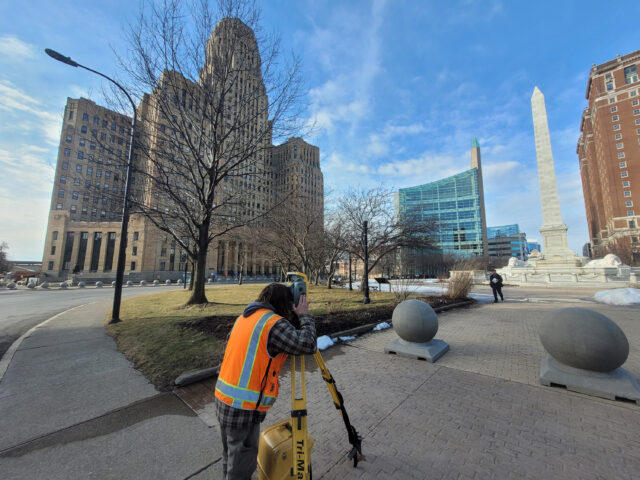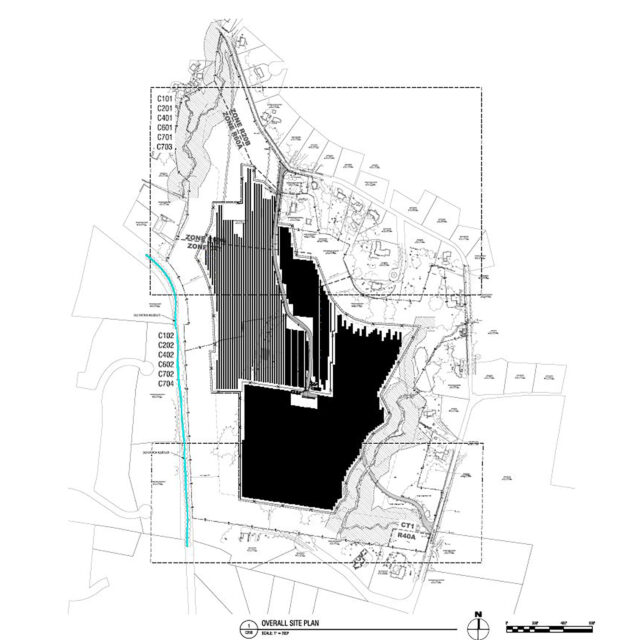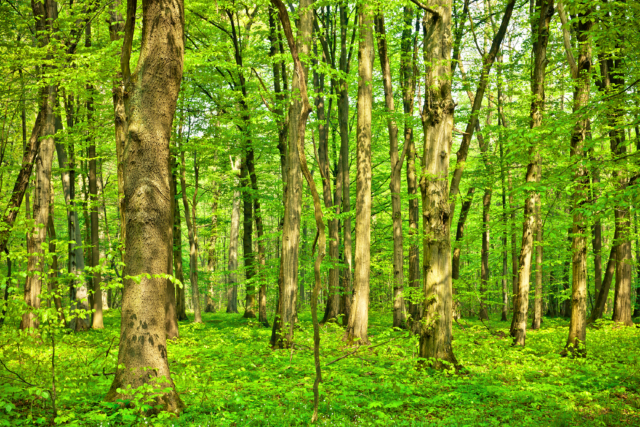
Heritage Wind Energy Project Article 10
Municipal Support in Approving Wind and Solar Energy Projects
Throughout its history, the Town of Barre has largely been a sparsely populated rural town with a patchwork of farm fields, wooded areas, and a single hamlet (Barre Center). Until 10 years ago, the high-voltage power line bisecting the town had little effect on land use and activity in the town. In recent years however, the town has become a target for large-scale renewable energy development with both wind and solar power projects proposed.
In 2018, LaBella Associates was selected as a trusted consultant to the Town of Barre to help assist the town in navigating the approval process of the 185MW Heritage Wind Project. The project application, submitted for review under the Section 94-c process, was recently approved and will power over 45,000 homes annually. During LaBella’s work on Heritage Wind, a second utility scale project was proposed to the town, Hemlock Ridge Solar. Once again, the town looked to LaBella for guidance, this time for a 200MW solar project.
These projects presented several significant challenges for which LaBella was able to provide support. First, both the Article 10 and Section 94-c processes differ greatly from the local approval process and SEQR review typically used by a municipality when projects are proposed within its boundaries. New York State holds the decision-making power and oversees the process, while the town’s role is limited to providing input on concerns and project compliance with local laws. Both Article 10 and Section 94-c are complex, legally-grounded approval processes with stringent rules and requirements governing participation.
Second, the Heritage Wind Project will result in wind turbines taller than any currently operating (on-shore) in the U.S. As many as 33 turbines up to 675 feet in height are proposed across the Town’s landscape. The tallest turbine in the country currently stands in Texas at 653 feet, and the tallest built in New York are currently around 400 feet. The taller turbine height can affect noise, shadow flicker, visibility and community character.
LaBella helped the town board sort through such technical impacts and the intricacies of the approval process. As is common with such projects, both town board members and local residents strongly differed in their support or opposition to the project, and the controversy divided the community. LaBella navigated the division in the community by breaking down the technical information on the anticipated environmental impacts and project design and objectively providing important data and summary material.
We directed the town board to the key municipal issues where the town could hold sway. For wind and solar projects, these typically include visual impacts, landscaping, agricultural resources, noise, shadow flicker, road use and repair, emergency response, public safety etc. LaBella particularly emphasizes review of the complaint resolution plan and the decommissioning plan, as critical to the long-term compatibility of the turbines or solar panels in day-to-day community life and their ultimate removal from the town landscape.
LaBella also worked with the Town of Barre to update and strengthen their wind and solar laws as a framework for identification of concerns. With its internal expertise working with municipalities as well as working with renewable energy developers, LaBella provides a comprehensive approach to all of our clients on identifying and overcoming the key issues involved in solar and wind projects.


Heritage Wind Project Featured in Buffalo News
The Buffalo News reports on how the Office of Renewable Energy Siting, a new agency in New York State, has approved the Heritage Wind Project in the Town of Barre.
Read More!












